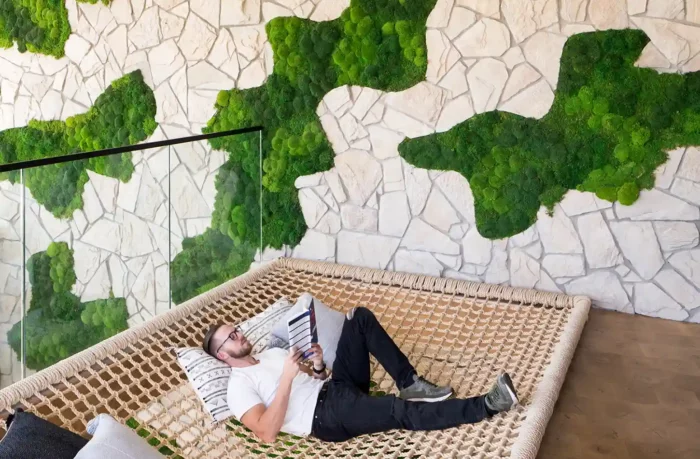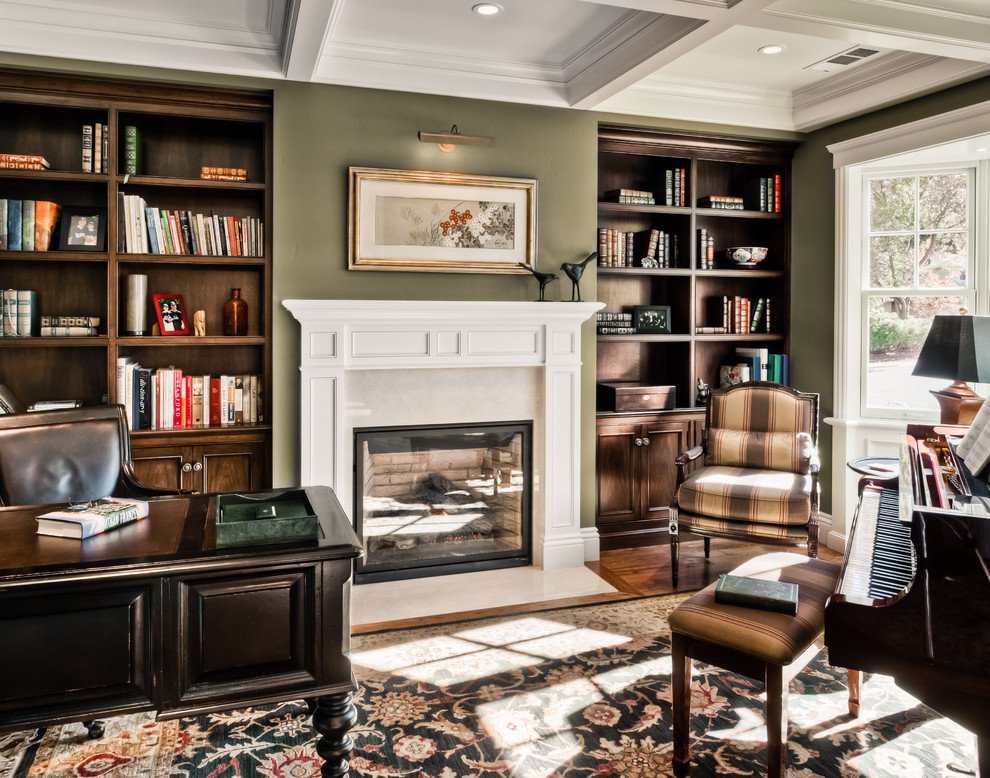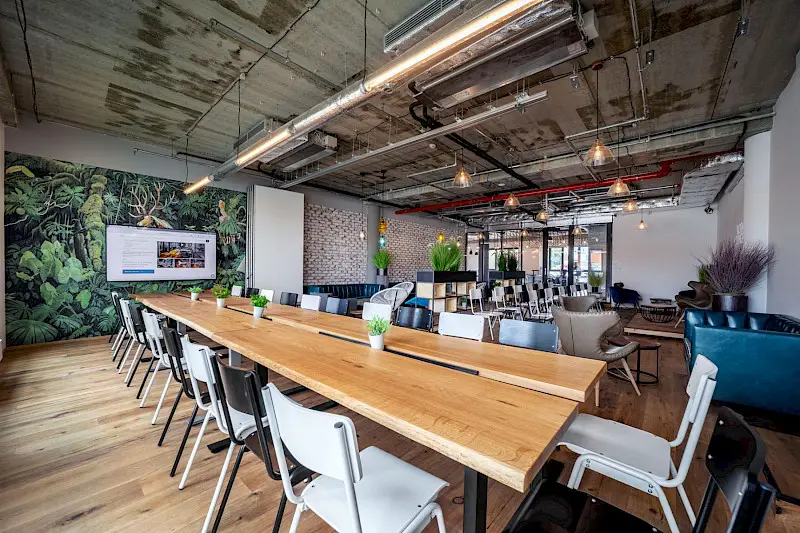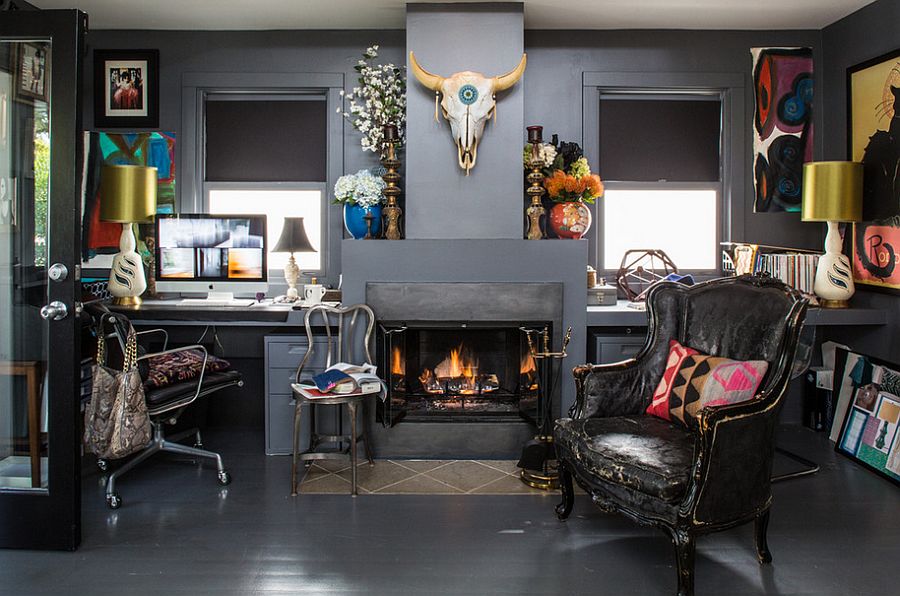As offices start to reopen, managers face a challenge.
The massive drop in productivity levels that we saw two years ago, has still not returned to its old glory days. And all the time-tracking software and productivity hacks, don’t seem to help.
So how do we fix this, while also encouraging people to come back to the workplace (and stay)?
The answer to your woes is simple biophilic design.
The “Journal of Experimental Psychology: Applied” published research in 2014, proved this once and for all. They discovered that just the mere presence of plants inside a space improved the occupant’s feeling of well-being by 40%!
Many other papers also reveal that adding natural or “biophilic” elements to offices increases worker productivity and reduces absenteeism.
This simple design technique flexibly fits into any existing workplace aesthetic. It can be used in both old-school-style rooms and modern spaces.
From classical planters in classic closed cabins to large green walls in minimal spaces, adding biophilic elements is easy and convenient too.
And everyone from Amazon to Apple has been espousing this design technique in their workplaces with fabulous results!
Challenges To Watch Out For While Bringing In Biophilic Design At Offices
But the big question that arises now is, what happens after the plants are brought in?
Plants, trees, and green walls all look great on paper.
But what about watering, repotting, fertilizing, and maintaining them in the long run? After all, nothing makes a space more depressing and unkempt than a bunch of dry, dying plants in the corner of a room.
Once brought in, plants need constant care, attention, and maintenance. Even the most simple of potted plants need the right care. From the right amount of light, water to temperature, humidity, every element counts.
Bring the lush, elegant green walls we all dream of, and your maintenance budget just multiplied by 10.
And the complications don’t even end there. Workspaces are often shared by dozens (if not hundreds) of people for hours on end. Using natural plants can get tricky in such situations if even one person is allergic to any of the plants.
But, worry not. All hope is not lost for biophilic design in offices.
A simple, popular alternative that avoids all these complications are faux plants.
And we aren’t talking about the fake-dew-drop dotted plastic plants that grandmas used in the ’90s.
We can instead rely on extremely realistic-looking “silk plants”. This variety of faux plants brings all the biophilia (and high productivity level), without any of the complications.

Here are 4 ways you can effectively incorporate faux plants into your workplace without making the space seem tacky or artificial.
4 Ways to Implement Biophilic Design At Offices to Improve Productivity
-
Liven Up Your Horizontal Surfaces
Most workspaces have one thing in common – lots and lots of horizontal space.
From private desks to common lunch tables, corridor space, and display counters, offices have them all.
These platforms are the easiest space to bring in the green and improve productivity.
According to Housenate, you can adorn work desks with small plants like the classic pothos, mini-ferns, and succulents.
For larger lunch tables you can layer these plants together in groups in the middle to avoid cluttering. Apart from adding depth, layering different varieties of faux plants, helps replicate how plants grow in real life.
Now for the larger floor areas, common areas, or corridor space, one can opt for the bigger varieties of potted faux plants. Some good options are fiddle leaf figs, bird of paradise, monsteras, and dracaenas.
-
Get Creative Up In The Air
When the office spaces are small, and every inch of desk space occupied, don’t try and cram plants in.
Instead avoid the clutter, while still bringing in the green with hanging baskets of plants or overhanging creepers that are woven overhead.
Bring in the geraniums, pothos creepers, Boston ferns, spider plants, and more for a fresh spin to the corner of any room.
-
Be Smart With The Vertical Partitions
One of the most overlooked opportunities to bring faux plants into an office space is with vertical partitions.
Yes, you probably can’t use them as cubicle partitions.
But you can bring in some high-quality artificial boxwood hedges into the semi-open spaces or lounge areas.
They transform the ambiance of a space instantly, with the fresh burst of green that strikes the eyes. And all while appearing very natural, and minimal garden-esque.
-
Add Feature Elements To Make A Statement
Now it doesn’t have to be all boring or small elements. Every office and every space needs a feature element to liven it up and add some character.
The best way to incorporate that, while also improving your staff’s productivity levels is with a statement faux plant.
For spaces where you want to highlight a wall with accent colors or materials, use a green wall instead. Not only will it look classy, but it will also make the entire room or area feel much lighter and more open. Use it to accentuate a wall behind the reception desk, or in a double-height space.
Pro Tip: Use a faux green wall only in spaces that have some direct source of natural lighting to avoid making it look obviously fake.
For spaces that need a centerpiece, look for statuesque faux plants that hold their own form.
Now instead of going for the obvious one massive tree, try layering instead. Use one tall, central tree with lots of character, and then layer it with a select few neutral, smaller plants of varying heights. This way you can add depth to the space, while also making the entire arrangement seem more natural.
While incorporating biophilia into your office, use a mix of all 4 options across spaces depending on the style needed.
Try them out and see your office productivity, and your staff’s well-being increase dramatically.
But be sure to not go overboard with the faux plants though. Or you risk making a “supposed-to-be-formal workspace” look like an overwhelming rain forest.
Sources:
- https://www.apa.org/pubs/journals/xap/
- https://www.workdesign.com/2018/09/enriching-the-workplace-with-biophilic-design/
- https://www.livemint.com/companies/news/how-some-companies-are-luring-employees-back-to-office-free-food-more-choice-11628226264488.html
- https://www.artiplanto.eu/blogs/news/9-tips-on-decorating-your-office-with-fake-plants
- https://smallbiztrends.com/2020/09/best-fake-plants.html
- https://www.nearlynatural.com/collections/silk-desktop-plants
- https://nymag.com/strategist/article/best-artificial-plants.html







